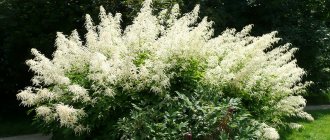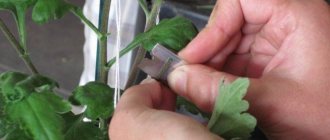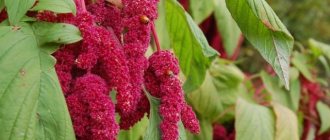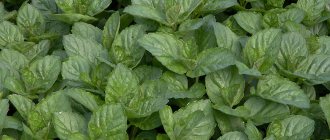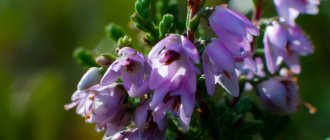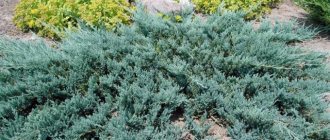Queen of Autumn - this is the name of this flower, which decorates the garden from late summer until frost, and often its delicate petals are covered with snow. The low-growing multiflora chrysanthemum appeared quite recently, but quickly gained particular popularity among both amateur flower growers and professional breeders.
Description of chrysanthemum multiflora
Those gardeners who want their garden to look bright and elegant not only in spring and summer, but also in autumn, should pay attention to a new floral product - the multiflora chrysanthemum. The plant is early, mid and late flowering. Its distinctive feature is its shape in the form of a ball or hemisphere. This Korean chrysanthemum is used both in landscape design and for decorating terraces, balconies, loggias, but it will not bloom indoors.
What does a multiflora chrysanthemum look like?
This garden plant has one trunk, from which many branches extend. Multiflora flowers are small, up to 5 cm in diameter, and their shades can be very different: from pure white to carmine. The small carved leaves of the chrysanthemum are similar to oak leaves, but some varieties bloom so profusely that the leaves are not visible at all: one continuous flowering cap. The spherical chrysanthemum grows as a bush, the height of which can reach 80 cm.
Features and varieties
The spherical chrysanthemum can be successfully grown in open ground, in greenhouses, and also in pots.
The most important feature of the multiflora chrysanthemum is the genetic ability to form a spherical crown. A cutting planted in the ground in the spring immediately begins to branch profusely. No pinching or pinching! Therefore, there is no need to specially form a chrysanthemum from the multiflora group; it will do it on its own.
Globular crown - natural for multiflora chrysanthemum
An adult bush reaches a height of 20-80 cm, the diameter is the same. In autumn, it is covered with many small flowers with a diameter of 2-6 cm. The flowering of some varieties is so abundant that the foliage ceases to be visible at all. What's left is a solid flower ball! At the same time, the color of the inflorescences can be very diverse: any shades of red, pink, yellow, beige, white, bronze. There are spherical chrysanthemums with greenish flowers, in the photo below - the multiflora variety Primo Pistache.
Chrysanthemum multiflora Primo Pistache
According to the flowering period, chrysanthemums are divided into:
- early - flowering begins in August;
- medium - flowering begins in September;
- late - flowering begins in October.
Residents of the northern regions (in Siberia, the Urals) should choose early-blooming spherical chrysanthemums. This will make it possible, even in a harsh climate, to admire their beauty for about 2 months. Late-flowering varieties in the north may simply not have time to bloom before frost arrives.
In warmer regions, choosing a variety based on flowering time is not so critical. Southerners can easily afford to grow multiflora chrysanthemums of any flowering period. Even late-flowering varieties will have time to bloom here and will delight their owners until mid/late November.
To find out the flowering period of a particular variety, you can refer to foreign catalogs. They often indicate the number of the week from which flowering begins. For example, the GEDIFLORA catalog (Belgium) indicates that the Fonti variety series begins to bloom in the 32nd week (counting from the beginning of the year), which corresponds to the beginning of September. In the 34th week (mid-September) the Pobo and Axima varieties show themselves in all their glory. All these are early varieties of multiflora. But the Mefisto variety series blooms in the 42nd week (mid-October) and paints an almost empty garden with its colors.
These dates can only be used as a guide, without full reference. Depending on the climate of your region, the weather conditions of a particular year, the flowering time of spherical chrysanthemums can vary significantly in one direction or another (on average by 10-20 days).
Chrysanthemum multiflora and Korean - the difference
Comparing the bushes of real multiflora chrysanthemum and Korean hybrids, you can notice their three main differences:
- The spherical chrysanthemum multiflora has one trunk, from which many shoots arise, so it reproduces only by cuttings. Korean chrysanthemums can have several main stems and can be propagated by dividing the bush.
- The multiflora chrysanthemum grows the correct ball shape on its own, without requiring pruning, since it is genetically predisposed to this. The Korean hybrid requires pinching when forming a bush.
- The flowers of multiflora are located along the entire circumference of the hemisphere, whereas in ordinary Korean chrysanthemums they are all directed upward.
Application
In medicine
Dried chrysanthemum flowers are used to brew tea, which lowers high blood pressure, has a beneficial effect on the circulatory system, strengthens the immune system and body resistance, improves sleep, and relieves nervous tension.
It is recommended to conduct aromatherapy sessions with chrysanthemum essential oil to prevent Parkinson's disease. Glycosides, chrysanthemum, anthocyanins, luteolin-7-glucoside, included in this aromatic product, help improve coronary circulation, reduce cardiac arrhythmia, having a positive effect on the nervous system.
At home
Beautiful balls of Multiflora chrysanthemums are used to decorate apartments, balconies, loggias, areas around the house, and in the garden. Fragrant dried flowers of the Multiflora chrysanthemum, like flowers of other varieties with a bright aroma, are used to make natural sachets to naturally aromatize the air in the room.
In cosmetology
Chrysanthemum essential oil is used for baths, masks, and creams. It is believed that washing with water infused with inflorescences improves the condition of the skin and its turgor.
Multiflora chrysanthemum varieties
Breeders have developed many varieties of this beautiful flower with an ideal spherical bush shape. Among all the flower diversity, it is sometimes difficult to decide which one will best decorate the garden plot. Let's look at the most popular varieties of multiflora flowers:
- Brankin Sunny
. A low-growing plant with a lush cap of yellow flowers that bloom in the second half of August. This multiflora does not bloom for long, because it is afraid of frost and needs special care in winter. - Bruncloud Bronze
. A plant with a juicy, deep orange shade of petals blooms in early autumn. - Brunsound Dark Orange
. The bushes of this yellow-orange chrysanthemum are densely dotted with small flowers. The beautiful plant blooms for two months. - Jacqueline Peach
. This variety has one peculiarity: it combines two shades of the same color palette. The lemon-yellow tone of the center of the flower smoothly turns into raspberry-pink along its edges. Bush up to 40 cm high. - Branchstorm
. The plant blooms in early September and then its cap is covered with bright red double flowers. This crimson shade especially distinguishes the half-meter bush on the site, but it must be protected from autumn frosts. - Branfontein White
. White chrysanthemum multiflora is decorated with double flowers. Although it is not afraid of a slight drop in temperature, the bush needs to be hilled up for the winter. - Alice
. The chrysanthemum multiflora Alice plant has bright yellow flowers up to 5 cm in diameter. The bush up to 40 cm high blooms in late summer and early autumn. - Elf
. The bush of this chrysanthemum grows up to 25 cm. Double milky-white flowers are decorated with a yellow center. This multiflora Elf chrysanthemum is early and blooms already in August. - Branski Plum
. The plant is tall and can stretch up to 70 cm. The dense chrysanthemum bush is decorated with many bright red small flowers. - Kamina Red
. This is a small flowering plant with compact bushes 40 cm high. Chrysanthemum multiflora Kamina Red blooms small red flowers through which the foliage is not visible.
Will not grow in shade and dampness
When choosing a planting site on your site, you need to know some factors for the successful growth and flowering of the plant, so that the result of your work will please you.
- Both Korean chrysanthemum and multiflora cannot be planted in areas where nightshade crops (potatoes, tomatoes and others) grew in the previous season. The best predecessors are legumes, ornamental annual crops, and grasses.
- If you purchased rooted cuttings, then for the first time after planting they must be protected from drafts.
- The place should be chosen dry, drained, without stagnant water. The soil must be moisture permeable. No wetlands.
- They are watered infrequently, but abundantly.
- The landing site should be open and sunny. Chrysanthemum does not grow in the shade, develops poorly, and also produces poor flowering. But the multiflora under these conditions will never form an even ball; the plant will stretch out.
- Chrysanthemums prefer neutral soil, with an acidity level of 6.5 (not lower than 6.2).
Where to plant multiflora chrysanthemum?
This plant does not like shade: in such a place its flowering becomes less abundant and bright. Planted under trees, a multiflora bush will not be able to form a spherical crown, will lose its decorative effect and will look depressed. Often, multiflora chrysanthemums stop flowering altogether, even in partial shade. This flower should be grown only in a spacious sunny area.
The spherical chrysanthemum multiflora will bloom well both in a pot and in open ground, but in the latter case its flowers will be larger. In addition, it is not recommended to plant the plant near a house or fence. In this case, the chrysanthemum will be in the sun only part of the day, and the rest of the time in the shade. This will interfere with uniform lighting.
From a cutting to a flowering ball
In order for the cutting to take root well and grow, the following conditions will need to be met:
- Abundance of light - the place for growing plants should be well lit, the length of daylight hours should be more than 14 hours.
- Temperature – about 20-22°C
- Timely watering - do not allow the substrate to become waterlogged or dry out.
With good care, the cutting grows quickly. As mentioned earlier, the spherical chrysanthemum does not need pinching. But still, some gardeners believe that such manipulation will not hurt, as it makes the bush denser. Accordingly, when flowering, more buds will appear on it. If you agree with this position, then pinch out the multiflora after 4-6 leaves appear.
Rooted cuttings can be planted in open ground after the end of night frosts. The sooner this is done, the larger the “ball” will be able to grow by autumn. And the more gorgeous the flowering will be!
Planting chrysanthemum multiflora
In order to grow a beautiful multiflora chrysanthemum bush, one small cutting planted in the spring is enough. Small bushes of the multiflora chrysanthemum plant, planted in open ground in April-May, turn into brightly blooming caps by August. When planting chrysanthemums, a distance of 50-70 cm must be maintained between seedlings, then they will not interfere with each other’s development. In the fall, you need to dig up the intended area and fertilize it with humus and ash, and in the spring you can start planting:
- Once again we dig up the place for the chrysanthemum.
- We dig a hole, the depth of which should be approximately 0.5 m.
- We lay a layer of drainage on the bottom (expanded clay, gravel, broken brick).
- Pour the prepared soil mixture on top and water it.
- We install a seedling in the hole, trying not to damage its roots, and next to it - a rod for support.
- We fill the planting with soil and water it abundantly.
- We cover the cutting (create an artificial shadow) using available materials.
Soil for chrysanthemums multiflora
Such flowering plants will thrive in light, moisture-permeable soil. The best option for them would be a mixture of earth, peat and sand, combined in equal proportions. If the area is dominated by peat soil, it will dry out quickly, which is unacceptable when growing multiflora chrysanthemums. Fertile soil will ensure that by autumn the bright spherical bush will become a real decoration of the site.
LiveInternetLiveInternet
Multiflora was not bred for cutting. This species is intended for decorating flower beds, has a distinctly decorative ball shape, and blooms from the end of August until the first snow. Chrysanthemum forms a healthy bush shape only in a sunny place. She is uncomfortable near trees, even in light partial shade. A depressed plant will not be able to form a spectacular ball.
Conventionally, all chrysanthemums can be divided into two groups: large-flowered (Indian) and small-flowered (Korean).
Equated to perennial shrubs. You can grow it both in the garden and on the balcony or even on the windowsill of the house.
This chrysanthemum has the shape of a ball, completely strewn with flowers. The ball is formed from one cutting and does not require pinching to form the spherical shape of the bush, so when planting it is necessary to maintain a distance of at least 50 cm.
Features of growing and caring for dwarf chrysanthemum
Chrysanthemum is unpretentious, it needs your attention and care in winter. At the end of February the plant will begin to grow, don’t miss it. At this time, the flower pot should be moved to a warmer room (on the veranda), where the temperature can be up to 15°C. We take it out, activate watering, and gradually accustom it to sunlight so that the plant does not get burned.
Reproduction
In spring, the bushes are taken to a warm, sunny place, sprayed with water, after which young shoots appear. Then the bush is divided. You can also propagate using cuttings.
The simplest and most common way to propagate chrysanthemums is to grow multiflora chrysanthemums from cuttings. Plant cuttings completely carry all the properties of the mother plant, such as color, shape and size of the bush. It is enough to take a couple of cuttings of the variety you are interested in to grow a new varietal flower for yourself.
Pre-prepare a container for seedlings. A bucket of sand is poured into the bottom of the container. Since chrysanthemums are not picky plants, the sand does not need to be calcined. Then prepare the soil by mixing a bucket of peat, a bucket of soil and half a bucket of sand. Large dried pieces of soil and plant debris are removed. Pour the resulting soil onto a layer of sand in a container, and mulch the surface with calcined sand. The layer of soil for growing cuttings must be at least 12 cm. If you plan to grow only a few plants, the cuttings are rooted in peat tablets or in separate pots.
Multiflora chrysanthemum cuttings are cut from the mother plant starting in March. The size of the finished cutting is 10 cm, the lower leaves are removed. The finished cuttings are kept in the root solution for a day and stuck into the prepared soil at a distance of 8-10 cm from each other. Do not place the cuttings too close, the survival rate of the cuttings is high, and they begin to grow quite quickly. The box with seedlings is kept in a warm room or greenhouse with high humidity for 10-15 days, during which time the cuttings have time to take root. Young plants are planted in separate cups, pots or planted in the ground. Multiflora chrysanthemum seedlings are pinched after 7-8 leaves so that they grow into a beautiful spherical shape.
To propagate chrysanthemums, it is better not to cut them, but to break off the branches. Cuttings can be harvested right up to the moment of flowering. Break off the branch into 2-3 internodes, remove the leaves and top. Plant in wet sand under a jar; the cuttings will take root in about 2-3 weeks. Small shoots can be cut in March (in a tablet or in a pot). In the spring (end of May) we calmly transfer the flowers to the flower beds for further cultivation.
Planting in containers and pots
If the transplant occurs in the reverse order, that is, from the soil to the pot, then it is worth considering some features. As a rule, chrysanthemums are planted in pots either for subsequent sale or to decorate a certain area of the plot or balcony. Transplanting into pots during flowering is carried out only when the third part of the buds opens; in this case, the procedure will not affect flowering. The pot must be at least 25 cm high and 18-25 cm in diameter, only then will the plant’s root system feel comfortable. The size of the pot depends on the vigor of the variety being planted. Any fertile substrate is suitable as potting soil, but not too light, as it dries out quickly.
It is not recommended to keep the chrysanthemum in one place for more than 2 years; it is advisable to divide it and replant it, otherwise it may lose the shape of the bush, i.e. will lose its decorative effect.
Planting in open ground
The place where you plan to plant the plants is chosen to be sunny, since plants grown in the shade do not form the necessary spherical shape of the bush. The site for planting is prepared in the fall; for this, a large amount of humus and ash is added to the soil and dug up. Immediately before planting the plants, the area is dug up again. It is not recommended to grow chrysanthemums for more than 2 years in one place, so the plant is replanted every 3 years.
Young plants grown from cuttings are planted in the ground when favorable conditions occur, starting at the end of April. The distance between bushes is calculated depending on the variety of chrysanthemums and the expected size of the bush. Medium-growing varieties have a ball diameter of up to 50 cm, vigorous varieties - from 50 cm and above. The size of the plant depends not only on the variety, but also on when the cuttings began to be grown. With early March cuttings, the largest bush will grow, but it takes the longest to grow in greenhouse conditions. Cuttings in late April-early May produce the strongest medium-sized bushes. June and later cuttings produce medium or small bushes, some can reach a height of only 20 cm, but despite this, they will still acquire the correct shape during development and bloom.
An adult plant is purchased in a container in the second half of summer. Planted in the ground, or continued to grow in a container, placed in a sunny place. Chrysanthemums tolerate replanting well, but in the summer it is advisable to plant the plant so as not to damage the roots and the formed bush, then it will delight you with beautiful, abundant flowering. When planting, chrysanthemums are watered abundantly.
TIP: Do not add mineral fertilizers when planting.
By doing this you stimulate active growth precisely at the moment when the plant needs rest. Fertilizers will only be needed when planting on poor sandy soils. Be sure to pinch the central sprout after the 8th leaf. If you bought an already blooming chrysanthemum in a pot, planting is carried out using the transshipment method; you should not pinch it. Don't forget to pinch the sprout next year in the spring. When planting, a very effective drainage technique is to add eggshells to the hole. The calcium contained in it will support the growth of the bush during the first 2-3 months, will contribute to its adaptation in the garden, and further active budding.
Care in summer and autumn
In summer, plants are afraid of drought. Multiflora needs to be watered every week, sometimes more often. Some gardeners, when digging before watering, add banana peels to the soil, which contain magnesium beneficial to the plant. Excessive watering can also harm spherical chrysanthemums; it provokes diseases.
During the budding period (June - July), Multiflora will need abundant watering. Plants must be watered only at the roots; sprinkling is not used. During the flowering period, watering is stopped.
TIP: Do not get carried away with applying nitrogen fertilizers, this provokes aphid damage. This is especially true for manure and garden humus.
We apply organic fertilizers, nitrogen, and phosphorus in small doses in the early stages of the growing season, when the buds are just awakening. Phosphorus will help strengthen the root system, nitrogen will stimulate vegetation. Later, fertilizing is carried out with potassium and magnesium fertilizers, which help the plant at the budding stage.
In the fall, do not rush to cut chrysanthemums; the plant needs to form growth points for next year. Wait for the flowers to dry. This means that the plant is ready for winter. Early pruning can interfere with the growth of dormant buds, which is harmful to the plant.
Preparing low-growing spherical chrysanthemum for winter, storing it in winter.
Wintering on the ground
Multiflora is a southern plant, so you definitely need to cover the bushes for the winter (for example, with your own dead wood), or dig up the rhizome, storing it in the basement until spring. To preserve the border flower in open ground (on the ground), in the fall the bush is pruned, shortening it to 15 cm. In October, we mulch the space under the bush with peat, sawdust, and garden humus. Wide layer - 10 cm, don’t be sorry. Cover the root system generously for the winter. And already in November, after the onset of the first cold weather, cover the plant with spruce branches, or your own dead wood, with the cone turned upside down. The result is a ventilated pyramidal shelter. Do not rush to cover the bushes too early to prevent diaper rash and rot. Also keep in mind that these flowers are very afraid of icing. Dried chrysanthemum wood is an excellent covering material that will be useful for gardeners who do not have spruce branches.
How to preserve in winter
The second option is safer; it is better to dig up valuable varieties for the winter. It will overwinter under cover, but the best option would be to store it in a cool room (from + 1 to + 5 °C) in a container with soil. Before the winter period, we cut the bush to a height of 10 - 15 cm and put it in the cellar (underground). The plant will need to be watered every month. Either fill the pot with the plant with sawdust or light soil, slightly moisten the substrate. In winter, periodically check the condition of the bushes. The main enemy of a dwarf flower when stored in a cellar is fungal diseases, rust and powdery mildew.
Dividing the bush
To obtain several new ones from an overgrown adult plant, you can divide the mother bush. To do this, the plant is dug up, its root system is divided into several parts, then the shoots are cut or pinched and planted. When planting, water abundantly and apply organic fertilizers.
This method of propagation is less advantageous compared to cuttings, since it is not always possible to grow a bush of the correct spherical shape from a cutting in the first year. In addition, cuttings allow you to get more new plants per season.
Diseases and pests
Chrysanthemums are susceptible to fungal diseases such as verticillium wilt, powdery mildew, rust, and gray rot. In unfavorable weather conditions or rainy weather, preventive treatment with fungicides against fungal diseases is carried out. The cause of disease is often improper care and excessively thick plantings. If detected early, the disease can be treated.
Sometimes chrysanthemums suffer from mosaic and aspermia. Plants affected by viral diseases must be destroyed and the area treated with formaldehyde. For the next few years, chrysanthemums are not planted in this area to avoid relapse.
Insect pests found on chrysanthemums: mites, caterpillars, slugs, aphids. If insects are detected, the plants are treated with insecticides; against slugs, the ground under the bushes is sprinkled with anti-slug preparations according to the instructions.
Sources: proklumbu.com; dachnaya-zhizn.ru
BEAUTY FOR YOUR GARDEN!!!
Your LYUBASHA BODIA
Chrysanthemum multiflora - care
Beginner flower growers are often interested in how to care for multiflora chrysanthemums. Although this plant is considered unpretentious, it also needs high-quality care, which consists of the following points:
- Watering
- it should be regular, but there is no need to flood the plants. Flowers experience a special need for water during active growth. When watering, moisture should not fall on the leaves and erode the trunk of the bush. - Pruning
is not needed for this variety, and this chrysanthemum does not tolerate pinching at all. Only faded flowers and old and damaged leaves need to be trimmed. - Weed control
- they must be regularly removed around the bushes and the soil mulched with peat or humus. - Loosening
- it should be superficial so as not to damage the root system, which is located close to the ground. You can loosen the soil after each watering.
How to feed multiflora chrysanthemum?
These flowering plants need regular feeding, and they are applied exclusively at the root, and if substances get on the plant itself, they must be washed off with water:
- First feeding
. It is carried out 3-4 weeks after rooting the cuttings in a permanent place. To do this, use urea, which contains nitrogen, which is necessary for the plant to grow green mass. Its granules are 70 g per 1 sq. m are scattered around the bushes and embedded in the ground. - Summer feeding
. During this period, Korean perennial chrysanthemum is fertilized with potassium monophosphate to enhance flowering. 15 g of the substance is diluted in 10 liters of water and watered the bushes. As a second feeding, bird droppings diluted in water in a concentration of 1:20 are useful. - The third time the
chrysanthemum bushes are fertilized in the fall, using superphosphate: 400 g per 1 sq. m. m. The granules are embedded in the soil and watered.
Wintering chrysanthemum multiflora
In order for the chrysanthemum bush to produce many new shoots in the spring, in the fall it is necessary to cut off the above-ground stem, leaving a stump 10 cm high. This work is carried out in November, after the plant has finished flowering. In the southern regions, wintering multiflora chrysanthemums in open ground is possible if it is covered with coniferous spruce branches and covered with humus. Some people use fallen leaves and spunbond folded in several layers for this. For the winter, you can dig up a flower, do the same pruning, and then transplant it into a pot and leave it to overwinter in a greenhouse or cool cellar.
What happens if a purchased chrysanthemum bush is planted entirely in the garden?
If you do this in September, it will bloom beautifully until the onset of persistent frosts. You can then dig it up and transplant it into a pot to make a queen cell out of it or leave it to overwinter outside. Given the kind of winters we have had, most likely with little shelter and perhaps even without it, the bush will overwinter and begin to grow in the spring. BUT, as mentioned above, such beautiful, neat flowering most likely will not happen. Chrysanthemum requires constant rejuvenation.
Before wintering, cut the bush to a height of no more than 10 cm and sprinkle with peat. You can put lutrasil on top.
Chrysanthemum multiflora in a pot
A plant such as the multiflora chrysanthemum, which is quite possible to grow at home, will have flowers in a pot that are not as large as those in open ground. Those chrysanthemum lovers who want to see this luxurious flower at home can be advised to keep a potted plant on a balcony or loggia, on a veranda or terrace.
Growing multiflora in a pot is convenient for several reasons:
- Small seedlings are not very decorative, so pots with them can be buried anywhere in the area, and before flowering they can be moved and buried in a prominent place in the flowerbed.
- In the fall, plants do not need to be dug out of the ground, but simply removed from the flowerbed and transferred in a pot for winter storage.
- To grow chrysanthemums in a pot, you will need to prepare a small amount of soil mixture.
What pot is needed for multiflora chrysanthemum?
To transplant this plant, you need to choose a container made of clay, plastic or ceramic. The volume of the pot for the multiflora chrysanthemum must correspond to its root system. If you want to grow a small compact plant, you can plant the cuttings in a liter pot, but in a 3-5 liter container a beautiful colored bush-ball will grow, which will decorate any flower bed.
Nutritional value and chemical composition
The energy value of dried flowers is about 24 kcal/100 g. The product contains:
- proteins – 3.36 g;
- fat – 0.56 g;
- carbohydrates – 0.02 g.
The flowers of the plant contain the following biologically active substances: flavonoids, carotenoids, a complex of vitamins, coumarins, cinnamic acid derivatives, amino acids and polysaccharides.
Quantitative composition:
- flavonoids – 0.87%;
- free amino acids – 2.52%;
- vitamin A – 19.77 mg/%, E – 0.10 mg/%, C – 1.78 mg/%;
- water-soluble polysaccharides – 8.89%;
- pectin compounds – 17.79%;
- microelements Mg, P, K, other substances.
How to propagate multiflora chrysanthemum?
There is the most convenient way to get a new plant of such a chrysanthemum - cuttings. To do this, a multiflora bush that overwintered indoors is brought out to warmth and light in February. The plant is watered and, if necessary, supplemented with light. In about 2-3 weeks, strong growth will emerge from the root. The propagation process of chrysanthemum is as follows:
- We cut cuttings 5-7 mm long from the new growth, treat the cut with root or epin, and tear off the lower leaves.
- We place the cuttings of the multiflora chrysanthemum in separate containers, deepening them 2-3 cm into a light neutral substrate.
- Cover the pots with seedlings with transparent film and place them in a warm and bright place.
- After 2-3 weeks, the roots of the planted cuttings will fill the volume of the pot and the plant will need to be transferred to a larger container.
- Around the beginning of May, young chrysanthemum seedlings can be planted in a permanent place.
